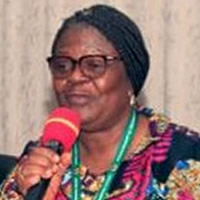Population
The region has a population of 4,780,380 representing the highest proportion (19.4 percent) of the total population of 24,658,823 in the country as at 26 September, 2010. The population of the Ashanti region has increased at a rate of 2.7 percent the population
enumerated in 2000, the third highest growth rate in the country after that of the Central and Greater Accra regions (3.1% each) and the Northern Region (2.9%). The population density (196.0 people per square kilometre) is the third highest nationally after that of the Greater Accra (1,235.8) and Central regions (224.1). The female population is 2,464,328, about 3 percentage points higher than that of the male population (2,316,052). Nearly 61 percent of the region?s population lives in urban areas, the second highest level of urbanisation after that of the Greater Accra Region.
Migration
The proportion of emigrants from the region (27.6%) is the highest nationally, followed by that of Greater Accra (25.2%) and Brong-Ahafo region (13.4%). Nearly 48 percent of the people migrate to Europe, 27 percent to the Americas, 15 percent to the Economic Community of West African States (ECOWAS) and 9 percent to other African countries.
Organization of the Report
This report is divided into 12 chapters. The first is the introduction, while the second chapter is devoted to a description of the population size, composition and age-sex structure, nationality, ethnicity and religion. Chapter Three analyzes the household size, structure and composition. Chapter Four is on marital status, followed by a discussion on the ownership and use of telecommunications facilities and computers in Chapter Five. The education and literacy of the population are presented in the sixth chapter. Fertility, mortality and migration characteristics are discussed in Chapter Seven, while economic activities are discussed in Chapter Eight. Disability is the subject matter in Chapter Nine, followed in Chapter Ten by a discussion of the population?s agricultural activities. Housing conditions are discussed in Chapter Eleven. The report ends with a summary, conclusions and policy recommendations in Chapter Twelve.
Date Created : 11/27/2017 4:13:58 AM




